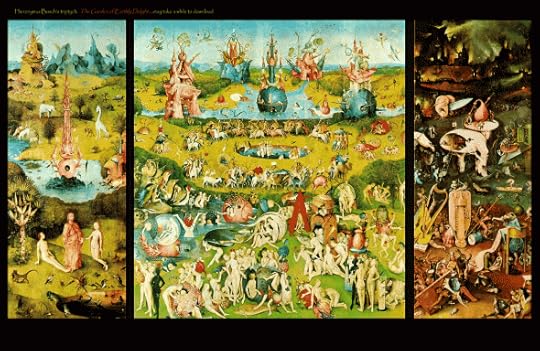Happiness is Not a Three-Step Dance
Most people in the business of selling salvation, in both its sacred and secular forms, affirm a type of three-step dance that can be described in the following way,
Original Blessing
The Fall
Redemption
Lets take each of these in turn. Firstly, there is Original Blessing. Basically this is the claim that there was once a state of equilibrium, wholeness and fulfillment. The variety of ways that this can actually be articulated vary immensely. Depending on who one talks to this might be childhood, a past relationship, some golden era of history or a kind of pre-fall paradise.
Secondly, there is The Fall. This is the current state, a state in which there is some profound disruption in the harmony that once existed: an imbalance and internal conflict of some kind. This might be expressed in terms of a broken relationship, ill-health, a general melancholia or spiritual oppression.
Finally there is Redemption. Again there are sacred and secular forms of this stage, but it involves the articulation of a future time in which the balance, order and harmony that we feel we have lost will be restored.
In religious communities, new age spirituality and various forms of modern consumerism we see this three-step dance implicitly expressed and affirmed.
From a more dialectic position however this idea can be viewed as a fantasy generated by the nature of our self-consciousness. For reasons that go beyond the reach of this post (but which I describe in The Idolatry of God) there are not three separate steps, but rather there is one step, one reality, that can be perceived in three different ways. Before we get to that we can understand the dialetic order of the above differently,
The sense of a Fall
That causes us to imagine,
Original Blessing
Redemption
In other words, as self-conscious beings we inherently feel a sense of brokenness and lack-of-oneness-with-oneself. This internal antagonism causes us to imagine some pre-existing state in which this was not the case and then fantasise about a future state in which this will no longer be the case.
In this way there are not three seperate states that we pass through, but rather one state (that manifests itself in an infinite variety of ways). The point is not to be found in a crude form of materialism that would simply put its hands in the air and proclaim that life is suffering. But rather in the counter-intuitive psychoanalytic insight that the brokenness can be robbed of its sting through the very embrace of it. Salvation thus resides in transforming how we position ourselves in relation to this state. We can outline these various positions in this way,
We are broken and don’t acknowledge it (through repression, disavowal etc.)
We are broken and do realize it
We are broken and affirm it
This doesn’t mean that we simply accept difficult things in our lives and resign ourselves to them. Rather it means freeing ourselves from the idea that something will bring some final inner harmony and learning to work for small, incremental changes. In concrete terms this means that, if we are ill, we don’t wait for a sudden change, but take concrete medical action and attempt to face the illness. Or that we don’t hide away from the world in some compound (whether that is a real compound or our bedroom), imagining that it will be remade in a perfect way, but work up the courage to try and change how we live now.
The idea that there is some way of bringing wholeness and harmony into our lives is actually an ideology which acts against making real change here and now, thus rendering us more susceptible to those who promise that they have the diet, drug or divinity that would make everything perfect again.
The problem is that this path is easier to write about than walk. I know from my own life that embracing ones own inner sorrows is profoundly difficult. It might be the royal road to life before death, but it isn’t an easy one to tread.
Peter Rollins's Blog
- Peter Rollins's profile
- 314 followers




